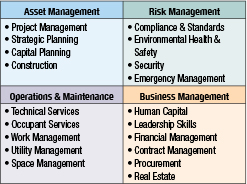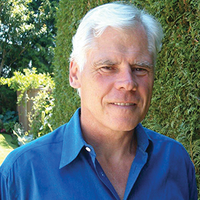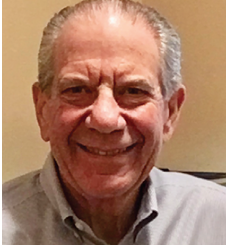By / par Steve Clayman, Director of Energy Initiatives
Want to be a Mind Reader?
Facilities managers are the people in charge of making sure buildings operate the way they were designed to operate and then some. That all-encompassing statement includes a huge number of responsibilities that register in the dozens. Let’s take a look*:

In addition to all of this, throw in a few professional designations and being on call 24/7. Of course, there’s the kids’ hockey practice, maybe the eavestroughs need replacing, and trying to remember what he/she was told to pick up on the way home. You get the picture. This is one very busy individual.
Some facilities, be they hospitals, office buildings, or a university campuses, are equivalent to the size of a small city. Reliance on reporting staff is critical. The mechanical insulation industry is a small but important part of all of this. The question is, how do we insert ourselves in a relevant way? How do we create the awareness with management and line personnel? Given the limited amount of time available in a day, why is what we have to say any more or less important than, say, the lighting people, or the floor-cleaning people, or the landscaper?
Let’s get our toolbox and figure out how to enter the mind of a facilities manager, and hopefully stay there long enough to get an audience. With so many balls in the air, there are a few we can latch onto. Among the many items facility managers are charged with is the constant drive to reduce operating costs along with greenhouse gas (GHG) emissions. This is where we have to engage and direct the conversation to mechanical insulation. Easier said than done.
Who is in charge anyway?
At the various trade shows we become involved with, a large variety of delegates stop at the TIAC booth. It’s hard to say why they stop; perhaps the door prize we offer, the travel mugs we give away, the presentation, or the scintillating personalities of the booth volunteers. Irrespective of any or all of these motivators, they do stop and chat. We meet people from finance, plumbers, facility managers, carpenters, and so it goes. The ultimate objective, of course, is to turn any lead into business for our members.
Part of what goes on internally in most facilities is a multi-disciplined approach to challenges, both current and down the road. If we chat up a carpenter, is there a possibility the information he or she picks up is passed along? How about someone in finance or human resources? What I’m suggesting is a multi-pronged approach, insofar as everyone who stops by our booth be contacted by the local TIAC members (booth volunteers), and then followed up with more directly. We have a great story to tell that makes a great deal of sense.
The TIAC members who participate in the TIAC booth each have their respective stories to tell; noteworthy projects completed, new products, particular expertise such as specification recommendations, mechanical insulation energy audits, and inspection. This should lead to perhaps an emailed newsletter (with an “unsubscribe” option) sent to all contacts.
The leads we generate at trade shows are the best type of potential income generators there are, and so follow-up is critical. People are busy and mechanical insulation isn’t always top-of-mind when it comes to the responsibility list we saw at the beginning of this article. Once an individual leaves our booth, there are countless distractions afterwards. Collectively, we have to develop a strategy to reconnect with our leads, ask for referrals if need be, and stay in touch.
The TIAC “Operations & Maintenance Protocol” has been well received. We’ve used that piece as a door opener, telling anyone interested there are a number of solutions to mechanical insulation deficiencies that in-house personnel can attend to. These personnel are already on the payroll and are directly involved in operations and maintenance responsibilities. Why not expand those responsibilities to include mechanical insulation when they walk the site? If in-house personnel can attend to these deficiencies, then go for it. If the approach is too complicated, call a local distributor or insulation contractor. Initially, there is no cost and this appeals to ever-present budget constraints.
Energy and water consumption are huge costs in buildings. A few provinces have mandated yearly reporting of the numbers with the goal to continuously seek improvements. We need to be able to speak to these issues and where mechanical insulation fits in significant ways. This is where facilities managers and the people who report to them live. Facility managers are seriously looking for solutions to real-world problems.
Who are the very best people to offer solutions? Okay, time’s up! It’s us! Every TIAC member can contribute with an unprecedented range of expertise. Continue to participate in helping out in the TIAC booth, be creative in following up with the leads, and ultimately generate business that previously didn’t exist, and keep in mind: we can help. ♣
Correction Notice – Where’s Steve, Fall 2018
Steve Clayman, director of energy initiatives for TIAC, is good, but he’s not that good. Our editorial team erroneously placed him in several places at once on the Where’s Steve Map on page 15 of the Fall, 2018 issue. While we acknowledge Steve’s remarkable prowess on a bicycle, we admit we made a mistake in representing his engagements, and we apologize for any inconvenience this caused.
Please click here for an updated PDF of the Fall 2018 issue, or watch for a corrected map in the Winter issue.



